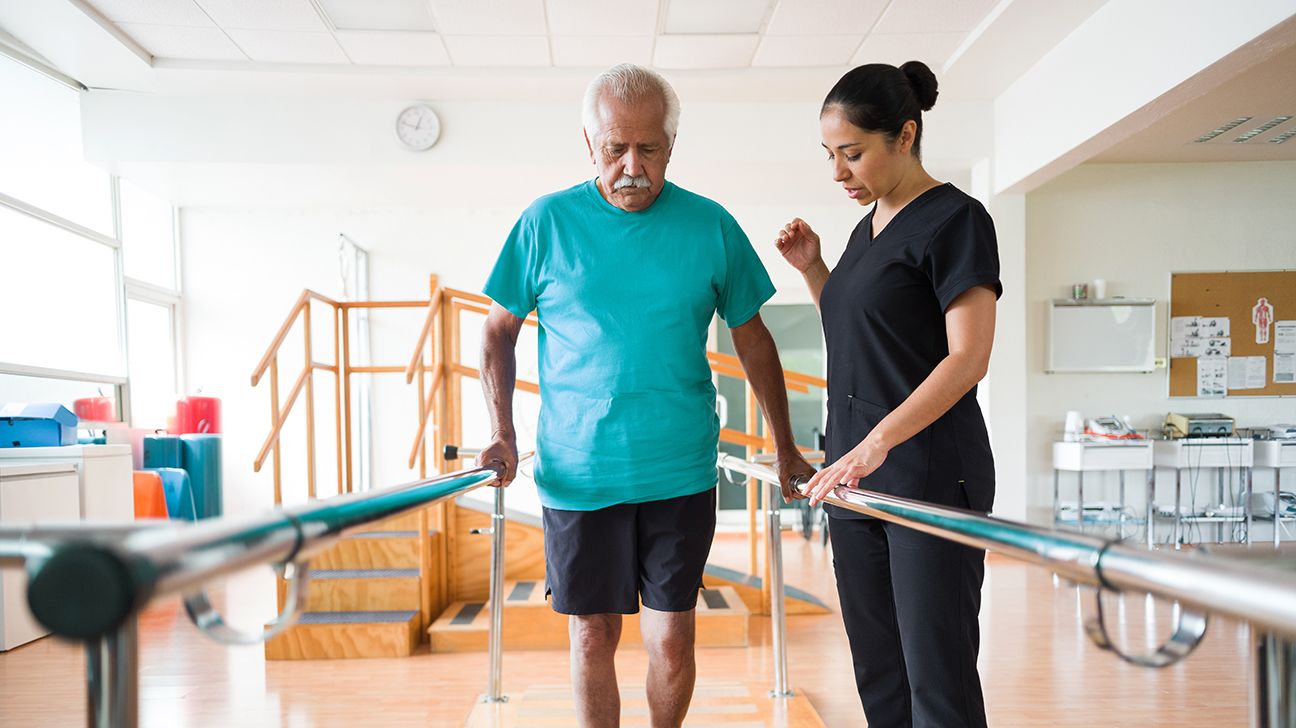A stroke happens when blood flow to your brain is decreased or stopped. Many people need physical therapy following a stroke to help improve their ability to move and become more independent.

A stroke occurs when the blood flow to your brain is interrupted. This lack of blood flow deprives your brain cells of the oxygen they need to live.
Depending on where in your brain the stroke occurs, it can affect many parts of your body.
Physical therapy, also sometimes known as physiotherapy, is one of the main rehabilitation therapies used to decrease disability and improve movement after a stroke. During physical therapy, your therapist uses treadmill training, strengthening, and a variety of other techniques to help you improve your movement.
In this article, we examine how physical therapy can help you recover from a stroke and what you can expect during your treatment.
Physical therapy is the main rehabilitation therapy for
According to a
Undergoing physical therapy can
- strength
- mobility
- coordination
- balance
- proprioception (your sense of self-movement)
Physical therapy can help you regain movement patterns such as:
- walking
- sitting
- lying down
- standing
- getting out of a chair
Physical therapists use many techniques to help you regain movement after a stroke. Your program will be customized to your individual needs depending on factors such as:
- your overall health
- the type of movement you’ve lost
- your degree of disability
Stroke rehabilitation usually starts in the hospital shortly after your stroke. At first, the program might focus on simple tasks like trying to pick up an object. Over time, your program may progress to help you relearn more complex motor tasks like walking.
Once you’re discharged from the hospital, your healthcare team will likely continue to recommend physical therapy either at home or at a clinic. Your physical therapist will typically give you exercises and stretches to do at home to help with your recovery.
Physical therapists use different techniques to help you recover. These include:
- task-oriented training, where you go through real-life motions, such as getting up from a chair
- strength training using weights, your body weight, or bands
- walking or balance training
- treadmill training
- constraint-induced movement therapy, where your strong arm is constrained so you’re forced to use your weak arm
- electrical stimulation to activate the nerves of your injured muscles
- virtual reality or video game tools
- biofeedback, which aims to help you gain control over your mind-body connection
- aquatic therapy, where you do exercises in the water
In a
In addition to helping you regain lost movement, your physical therapist can also:
- fit you for braces, a wheelchair, or other mobility aids
- teach you how to use these mobility devices
- provide training to your family or caregiver
If you’re in stable condition, you may be able to start physical therapy as soon as
In a
According to the
The duration that you need to do physical therapy depends on the severity of your stroke and your level of disability. You may need to do physical therapy for months to years.
The most rapid recovery usually occurs within the first
Typically, you’ll do several sessions per week.
Depending on the extent and complications of your stroke, you may have to do other types of rehabilitation therapy. According to the
Other types of therapy you may benefit from include:
- speech therapy to help you relearn how to speak or communicate
- occupational therapy to help you regain skills you need to perform everyday activities
- vocational therapy to help you return to the workforce
- cognitive behavioral therapy to help you deal with the changes in your life
Learn more about stroke recovery.
Physical therapy is an important part of the rehabilitation process for many people who have had a stroke. It can potentially help you improve your recovery and minimize your disability.
During physical therapy, a therapist uses a variety of techniques to help you regain your ability to move, such as strengthening exercises, treadmill training, or having you perform everyday activities.
Your healthcare team can help you decide how long and how many times per week you should attend physical therapy.
